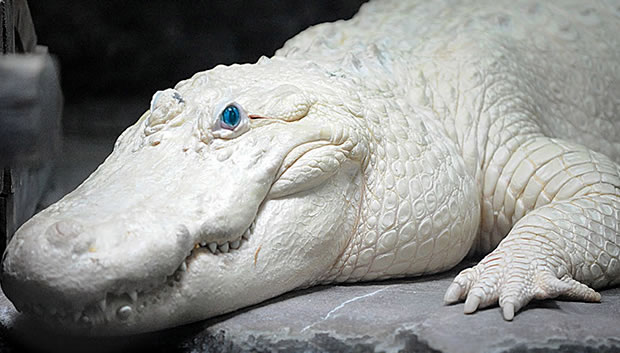
Bridled Nail-tailed Wallaby
|
Creature Profile
The bridled nail-tailed wallaby was once thought to be extinct until rediscovered in 1973 in an area near
Queensland. Today it is only found in the Taunton Scientific Reserve of northeastern Australia, and recently, a population
was released into Idalia National Park. This creature gets its name from the white "bridle" line that starts on the center of the
neck and goes around the shoulders and ending at the forearms on each side. It also possesses a black stripe on its back
that runs across the whole body. Another distinguishing feature is its "nail" (horny spur) on the end of its tail that is partially covered by
hair. Males are larger than females and can weigh up to 282 lbs. Females can weigh up to 176 lbs.
Historically, the preferred habitat of the species seems to have been acacia shrubland and grassy woodlands in the hot and
dry semi-arid region of eastern Australia. In Taunton, reported habitat requirements have been open woodlands and forest containing
the poplar box plant Eucalyptus populnea and the brigalow plant Acacia harpophylla. They are shy and solitary creatures,
only preferring to be active at night. During the day, they spend much of their time underneath grass or a bush in a small shallow nest.
Diet consists of grasses and forbs, and during very dry periods, they feed on false sandalwood. Breeding occurs year round, and the female
gives birth to one "joey" (young wallaby) after a gestation period of 23 days. The joey remains in its mother's pouch for about four months.
The population of the bridled nail-tailed wallaby has declined due to competition with domestic
animals, loss of habitat, and predation by introduced animals such as foxes and dingoes. The species has been bred
successfully in captivity and reintroduced into protected areas, and there are plans for more reintroductions in national
parks and nature reserves in the future.
Wikipedia Article

|
Wikipedia Article Copyright Notice: This article is licensed under the GNU Free Documentation License. It uses material from the Wikipedia article "Bridled nail-tail wallaby". |
May 8, 2017
Glenn, C. R. 2006. "Earth's Endangered Creatures - Bridled Nail-tailed Wallaby Facts" (Online). Accessed 4/18/2024 at http://earthsendangered.com/profile.asp?sp=493&ID=4.
Need more Bridled Nail-tailed Wallaby facts?




